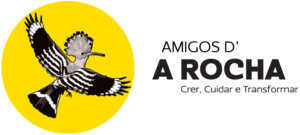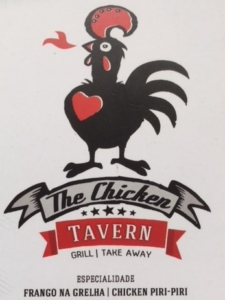Newsletter September 2022


Find out how the bird population is doing and how climate change is affecting soils
Happy migration!
Helen & Filipa
S
N
A
P
SHOT

Luiz Vieira Caldas Saldanha

Portuguese Marine Biologist and Professor
Born: 16th December, 1937, Lisbon, Portugal
Died: 16th November, 1997, Cascais, Portugal
Luiz Saldanha, was born in Lisbon in 1937: he studied at the French High School and later at the University of Sciences in Lisbon. He finished his PhD in Marine Biology; his thesis was about the marine wild fauna of Arrábida, Setúbal. In 1970 he started to teach at the University of Sciences in Lisbon and in 1979 he became a full time professor at the same University.
During his life he had important leadership jobs; he was the President of the National institute for Fisheries Research and the President of the Nature Protection League (Liga para a Proteção da Natureza – LPN), he founded the Sea Institute and was its first President and he was responsible for the Marine Lab of Guia (Cascais). He published several articles about Sea Biology and had an important role in the development of this science in Portugal. He took part in several projects and marine expeditions around the world and worked in well known marine research labs in France, United Kingdom, USA and Monaco.
In 1965, Luiz Saldanha presented a project to the Marine Ministry, to create a marine protected area in Arrábida, although it was not accepted at the time, after his death in 1998, a protected marine area was created, named after him: Marine Park Professor Luiz Saldanha (visit the website for more information here)
IFO’s – Identified Flying Objects…

Pale Shoulder Moth
(Acontia lucida, Hufnagel, 1766)

Morphology: It is a macro moth from the Noctuidae Family, with a wingspan between 26 and 30 mm. The forewings have a whitish front part, a dark brown middle band and a white mark on the outer edge; the hindwings are whitish with a dark brown band close to the apex. The adults fly from May to August (in some locations can fly all year round).
Habitat: Grasslands, roadsides, dunes, ruderal terrains and other locations
Distribution: Southern Europe, North Africa, Canary Islands and Madeira.
Notes: The larvae is polyphagous and feeds on several herbaceous plants, specially Mallow (Malva sp), Common Marshmallow (Althaea officinallis), Field bindweed (Convolvulus arvensis) and others. The colour of the wings resemble bird poop, an interesting camouflage.
Tweet… Tweet…


Photo by Guillaume Réthoré
Eleonora’s Falcon
(Falco eleonorae, Gene, 1839)

Photo from ebird
Identification: It is a small bird of prey from the Falconidae Family, 36 to 42 cm in length and wingspan between 87 and 104 cm. Shows 2 distinctive plumages: a dark one and a light one, in the first morph the plumage is almost entirely dark brown and the second morph it has barred rusty brown underparts and contrast between dark underwing covers and paler base to the flight feathers. The wings are pointed, the tail is long and it has a slim body. Females and males are alike.
Habitat and Ecology: Inhabits coastal cliffs, breeds in colonies on Mediterranean Islands. The diet consists of insects (dragon flies), small birds and sometimes bats.
Distribution: Mediterranean region: Greece, Cyprus, Canary Islands, Ibiza, Spain, Italy, Croatia, Morocco and Algeria; winters in Madagascar and East Africa. In Portugal it’s regionally extant, it is possible to see it in the autumn migration in Sagres.
Threats and Notes: Least Concern (LC) according to the Red List of the International Union for Conservation of Nature (IUCN). The population appears to be decreasing. This species is protected by national laws in many countries within its range. The name “Eleonora” (English and Latin) was given in honour to Eleanor of Arborea, a Sicilian heroine, who was the first ruler in Europe to grant protection to hawk and falcon nests against illegal hunters.
DID YOU KNOW? 
- On the 17th of September, A Rocha will celebrate the International Coastal Cleaning Day with a beach clean at Praia de Alvor. It’s the fourth year A Rocha is doing this activity together with Fundação Oceano Azul. Meeting point: 09:20 at the car park near the swimming pool in Alvor. Please book through the email: Isabel.soares@arocha.org
- Bird migration already started!! Richard Dan and Jo Conway, visited Cruzinha again for some bird-ringing at the end of August. The number of birds has not been great, although they managed to catch & ring: Red Necked Nightjar (Caprimulgus ruficollis), Orphean Warbler (Curruca hortensis), Golden Oriole (Oriolus oriolus), Woodchat Shrike (Lanius senator), Bonelli’s Warbler (Phylloscopus bonneli), Garden Warbler (Sylvia borin), Nightingale (Luscinia megarhynchos) and Willow Wabler (Phylloscopus trochillus).

Bonelli’s Warbler (Phylloscopus bonneli)

Golden Oriole (Oriolus oriolus)

Red Necked Nightjar (Caprimulgus ruficollis)
Photos by Richard Dan
-
On the 10th of September, A Rocha will give a guided ‘Walk in Ponta da Piedade’, the guide will be Guillaume Réthoré (9h30 to 11h30). The walk is organized by Lagos Council and requires pre booking. Visit the Lagos Council website for booking here
Friends Event -21st September 2022
Butterfly Walk & Lunch (Walk in biodiversity Station of Bravura)
09.30am to 14.30pm
Starting from Cruzinha, we will go in the minibus to Bravura where we will walk and hopefully discover butterflies of the area. Paula Banza and Isabel Soares will be guiding and talking about the species we find. On returning to Cruzinha lunch will be served which is included in the ticket price.
Ticket price – 25 Euros (Friends) 30 Euros (Non Friends)
There are 12 places available so please book early so not to be disappointed.
 INVASIVE SPECIES
INVASIVE SPECIES
Nutria (Myocaster coypus, Molina, 1782)
Phylum: Chordata
Class: Mammalia
Order: Rodentia
Family: Echimyidae
Origin: Subtropical and temperate South America
Size: 40 to 60 cm (body), 30 to 45 cm (tail)
The Nutria is a large rodent, rat-like. The pelage is brown-grey-yellowish with a yellow spot under the ear, the belly is white with a cylindrical tail; the incisors are prominent and bright-orange-yellow and it has a white muzzle. The hairs are soft and dense adapted to semi-aquatic life and between the fingers it has interdigital membranes for swimming. The tail is shorter than the body length and the adults can reach 14 to 16 kg, although usually average 4 to 7 kg. Females and males are alike in colour and size.
This species is native to South America, south of 23° latitude (includes Argentina, Bolivia, Southern Brazil, Chile, Paraguay and Uruguay). Generally are found near the water, in reed beds, swamps, marshes and also in rivers, streams, ponds, lakes and brackish waters, rarely are observed over 100 metres from the water. The diet is mainly herbivorous, feeding of wetland plants and crops, but occasionally of fresh water mussels. Breeding occurs through the year and sexual maturity its reach at 3 to 10 months old. Severe winter cold reduces reproductive success and adult survival. The Nutria is more active at dusk and lives in groups.
Economically, the Nutria are valued as a source of fur and was introduced in many countries for fur exploitation; due to escapes and release from fur farms this species is now naturalized in North America, Europe and Asia. This species is considered one of the 100 world’s worst invaders; they build burrows which penetrate and damage river banks, dykes and irrigation facilities, it’s feeding methods lead to the destruction of large areas of reed swamp, which has impact on plants, insects, birds and fish species. This species was not yet observed in Portugal although is considered invasive in many countries in Europe including Ireland, Italy, France and Spain.
POPPED UP

Family: Dipsacaceae
Identification: It is an annual herbaceous plant, can grow from 50 to 70 cm in height. The stem is branched and the leaves are pinnately dentate, long and dark green. The flowers grow in pin cushion flower heads. Flowers from April to September (depending on the location).
Habitat and distribution: Grasslands, uncultivated fields, fallow lands, road sides, it grows in every kind of soil. Native from the Mediterranean Region.
Notes: This species is known to attract insects (bee, butterflies and moths) and other pollinators; as well as birds which feed from its seeds. In some countries like in the USA or Australia it has become invasive.

Mourningbride
(Scabiosa atropurpurea, L.)
DATES TO REMEMBER

1st, 8th, 15th, 22rd and 29th September – Cruzinha Bird ringing display & Moth Talk (10 to 12 am). requires a pre booking. Book here
10th September – Walk in Ponta da Piedade, Lagos
17th September – International coastal cleaning day. Beach cleaning Alvor, 09:20am, meeting point at the car park next to Alvor swimming pool. For more information email: isabel.soares@arocha.org
21st September – Friends Event: Butterfly Walk in Biodiversity Station of Bravura
22nd September – Autumn equinox. Beginning of Autumn.
Sagres Bird watching Festival from 1st to 5th October. More information here
Thank you for supporting the Friends of A Rocha Portugal

Physiotherapy, Massages (relaxation, sports, therapeutic)
Other therapies
Beauty (manicure, pedicure, hair removal, facials)
Open Monday to Friday

Dr Roy Rodrigues
Av. Do Brasil, Qta das Palmeiras, Lt P2, R/c A, 8500-299 Portimão
(+351) 282180683
royaldente@gmail.com

Urbanização Mar e Serra n° 47, Alvor
8500 – 783 Portimão
(+351) 911597735
Thought of the month 
Nature is painting for us, day after day, pictures of infinite beauty.”
—John Ruskin (1819-1900) English writer, philosopher and art critic

LETS BE GREEN – LETS BE GREEN – LETS BE GREEN 
How long does it take to breakdown items that are left in the environment?
- Orange peel – 6 months

- 100% cotton T-shirt – 6 months
- Non-waxed egg cartons – 5 years
- Cigarette Butts – 10 years
- Batteries – 100 years
- Spray Cans – 500 years
- Glass – For ever
Reusable is always better, things decompose much slower than you think.
How do we measure biodegradability?
- To make long-term estimates, scientists often use respirometry tests. They place a solid waste sample – like a newspaper, banana peel or plastic bag – in a container with microorganisms and soil, and then they aerate the mixture. Over the course of several days, microorganisms digest the sample bit by bit and produce carbon dioxide – the resulting amount of CO2 serves as an indicator of degradation.
LETS BE GREEN – LETS BE GREEN – LETS BE GREEN
Common Bird Census Portugal 2004-2021
The common bird census is a monitoring program to evaluate the common breeding bird’s populations and provide indictors of the health of the environment. The program is based on listening points in squares of 10×10 km along the continental area, it’s done by volunteers and its part of Citizen Science; this program started in 2004.

Spotless Starling
Between 2004 and 2021, 64 birds were evaluated, and their population tendencies; according to the results, the population of Woodchat Shrike (Lanius senator) is highly declining. Some of the farmland birds are also showing negative tendencies like the Barn Swallow (Hirundo rustica) and the Serin (Serinus serinus), the same happens with some woodland birds, like the Common Cuckoo (Cuculus canorus) and the Great Tit (Parus major). On the other hand some species are getting more common like the Spotless Starling (Sturnus unicolor), the Coloured Dove (Streptopelia decaocto) and the common Swift (Apus apus).
In the spring of 2021, the species with the most records was the House Sparrow (Passer domesticus) and only 2 species were recorded in all the squares of the study, the House Sparrow (Passer domesticus) and the Blackbird (Turdus merula).
Climate change-soil
 The soil is an important structure in climate system and it is the second largest carbon store after oceans. Climate change does not affect just the atmosphere; plants draw carbon from the atmosphere and use it not just for growth above ground but as well for the roots which deposit carbon in the soil. Healthy soils can mitigate climate change.
The soil is an important structure in climate system and it is the second largest carbon store after oceans. Climate change does not affect just the atmosphere; plants draw carbon from the atmosphere and use it not just for growth above ground but as well for the roots which deposit carbon in the soil. Healthy soils can mitigate climate change.
Not all the soils are good in storing carbon; the best ones are the peatlands (founded mainly in the northern hemisphere); also grasslands can store large amounts of carbon. The soils from warmer and drier areas store less carbon. The higher temperatures can cause the increase of plant growth and more carbon stored in the soil, although it can also increase the decomposition and mineralisation of the organic matter in the soil, reducing carbon content.
Peatlands have high levels of humidity and decomposition is slower due to the low levels of oxygen in the water; if these areas dry out, decomposition will increase and large amounts of carbon will be released into the atmosphere. There are already signs that soil moisture content is being affected by raising temperatures and changes in precipitation patterns.
The increase of carbon in the atmosphere can increase the microbe activity in the soil, releasing even more carbon…
Sustainability Champions 
Sustainability Champions from around the World– Looking at ways to curb pollution and waste management.
We would like to thank Daniel Hartz, the founder of Sustainability Champions for giving us the permission to share this information.
 Dr Daniel Farb created a noise-free, flower-shaped wind turbine that captures wind in any direction and is also safe for birds. Tulips and flowers could now help harness the power of wind after Dr Farb came up with his own spin on wind power in an “eco art” design. He developed a tulip-shaped wind turbine to make clean energy production less of an eyesore.
Dr Daniel Farb created a noise-free, flower-shaped wind turbine that captures wind in any direction and is also safe for birds. Tulips and flowers could now help harness the power of wind after Dr Farb came up with his own spin on wind power in an “eco art” design. He developed a tulip-shaped wind turbine to make clean energy production less of an eyesore.
Dr Farb founded Flower Turbines, a company that developed a Wind Tulip which aims to democratize green energy for everyone and make small wind farms a leading player in the green energy industry.
The popularity of traditional wind turbines is not at at an all-time high. The main reason is the noise they make and their adverse environmental impacts, such as spinning turbine blades posing a threat to flying wildlife like birds and bats. Wind Tulips pose no danger to birds and other wildlife, particularly in urban settings, the company claims, and they create noise at a low frequency undetectable to humans.
Shaped like sleek flowers in assorted colours and sizes (1, 3 and 6 meters high) for small-scale installations. Wind Tulips are designed to do double duty as eco-art on the roof of a house, shopping mall, school or skyscraper.
Wind Tulips are a good match with solar energy, because wind and solar have natural opposite panel patterns when they produce energy. According to the company, they are not a competitor or an alternative for the big energy companies. They are a solution provider for companies and corporates that really want to pivot their business towards sustainability.

Right to a healthy environment is declared a Universal Human Right
 Access to a clean, healthy and sustainable environment has been declared a Universal Human Right, in a historic vote by the United Nations General Assembly. The decision stems from BirdLife International’s #1Planet1Right petition, which was supported in Portugal by SPEA and signed by over 120 thousand people around the world. More info here
Access to a clean, healthy and sustainable environment has been declared a Universal Human Right, in a historic vote by the United Nations General Assembly. The decision stems from BirdLife International’s #1Planet1Right petition, which was supported in Portugal by SPEA and signed by over 120 thousand people around the world. More info here

Check the website for dates for organised tours
Guillaume Réthoré (Gui)- My life with birds: Golden-ringed Dragonfly (Cordulegaster boltonii)
 This article is called « my life with the birds” but the picture I’ll share today is not a bird (but a flying living creature though). A group I am interested in, besides the birds are the dragonflies. A colleague of mine introduced me to this world about 15 years ago and I never left it. Most species are visible in summer when there are few birds around so chasing dragonflies is a great alternative to birding during the hottest months.
This article is called « my life with the birds” but the picture I’ll share today is not a bird (but a flying living creature though). A group I am interested in, besides the birds are the dragonflies. A colleague of mine introduced me to this world about 15 years ago and I never left it. Most species are visible in summer when there are few birds around so chasing dragonflies is a great alternative to birding during the hottest months.
This species, the Golden-ringed Dragonfly (Cordulegaster boltonii) is a big dragonfly found near streams in forests and heathlands. It is hard to photograph when flying but if you manage to find where it perches, it stays there for awhile. This one was hunting in heathland and perched to eat the insects it caught, allowing me to photograph it. This species has a wide distribution, from Morocco to Scandinavia and from Portugal to Poland. The pattern of the yellow and black rings varies between regions. This one belongs to the boltonii subspecies, found in most of Europe (including Portugal). It was photographed in the Basque Country in France.
Text and photo by Guillaume Réthoré
Editor: Filipa Bragança
English proof reading: Helen Rodda
Portuguese proof reading: Lena Soares
Production controller: Helen Rodda
Email: friends.arpt@arocha.org
Thank you for supporting us!
Hope to see you soon!


 What makes a good Birthday present?
What makes a good Birthday present?

